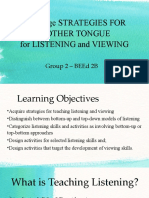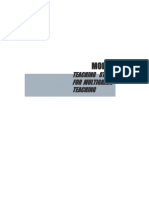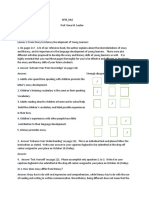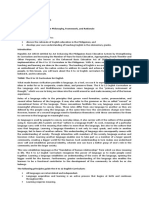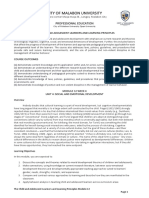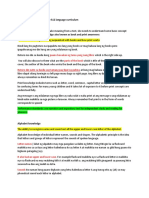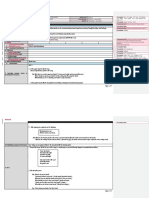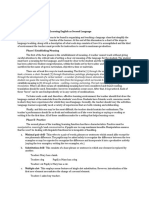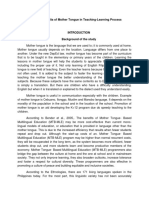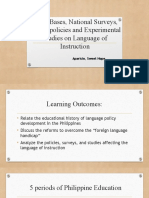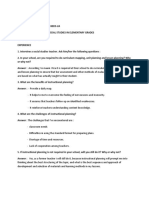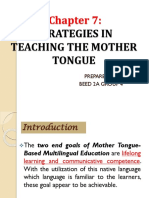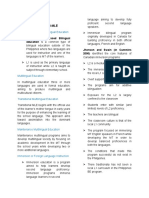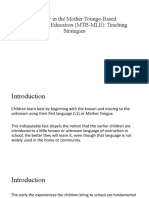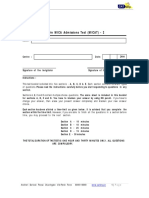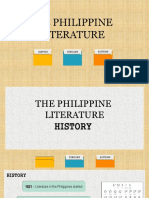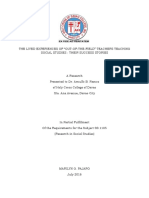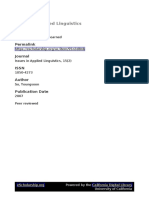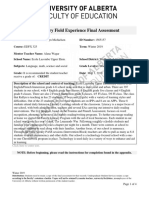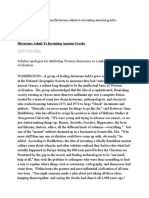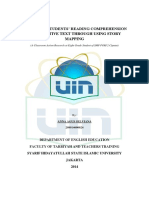0% found this document useful (0 votes)
3K views4 pagesIntegrating Macro Skills (DAANOY and PLATON)
The document discusses strategies for integrating macro skills like listening, speaking, reading, and writing into mother tongue lessons. It suggests activities that make learning engaging like using poems, rhymes, and Total Physical Response. Color-coded reading, interpretive dramatic reading, and routine activities are recommended for developing reading skills. Writing activities can utilize instructional materials like interactive whiteboards. Viewing skills are taught using hand puppets, pictures, and games like a simulated fishing or farming activity. The overall goal is to teach the mother tongue effectively in primary grades by using the learner's native language.
Uploaded by
Random BotCopyright
© © All Rights Reserved
We take content rights seriously. If you suspect this is your content, claim it here.
Available Formats
Download as DOCX, PDF, TXT or read online on Scribd
0% found this document useful (0 votes)
3K views4 pagesIntegrating Macro Skills (DAANOY and PLATON)
The document discusses strategies for integrating macro skills like listening, speaking, reading, and writing into mother tongue lessons. It suggests activities that make learning engaging like using poems, rhymes, and Total Physical Response. Color-coded reading, interpretive dramatic reading, and routine activities are recommended for developing reading skills. Writing activities can utilize instructional materials like interactive whiteboards. Viewing skills are taught using hand puppets, pictures, and games like a simulated fishing or farming activity. The overall goal is to teach the mother tongue effectively in primary grades by using the learner's native language.
Uploaded by
Random BotCopyright
© © All Rights Reserved
We take content rights seriously. If you suspect this is your content, claim it here.
Available Formats
Download as DOCX, PDF, TXT or read online on Scribd
/ 4

